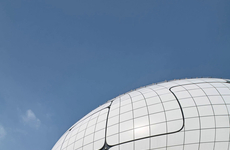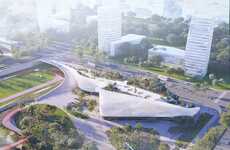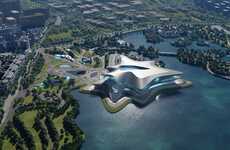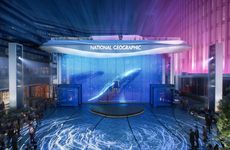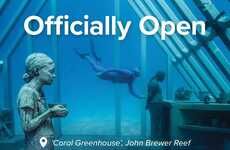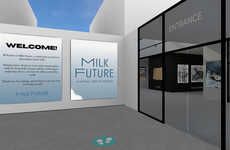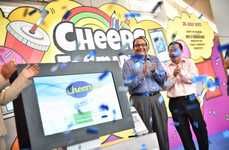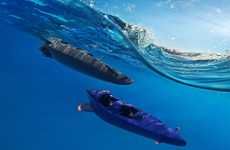
The Museum of Tomorrow Has Opened in Rio De Janeiro
Rebecca Byers — January 25, 2016 — Art & Design
References: superfuture
The Museum of Tomorrow (Museu do Amanhã in the country's native Portuguese) is a stunning architectural wonder that recently opened its doors to the public in Rio de Janeiro. The 15,000-square-meter structure helps refocus the spotlight on Rio de Janeiro, who is getting ready to host the 2016 Summer Olympics later this year.
Designed by iconic spanish architect santiago calatrava, the Museum of Tomorrow is set up on a pier that allows its elongated form to stretch out above the Atlantic Ocean and is one of the main facets of the city's Porta Maravilhosa urban redevelopment plan. Set up as a science museum, the Museum of Tomorrow is sure to tempt any visitors in town for the games and beyond.
Designed by iconic spanish architect santiago calatrava, the Museum of Tomorrow is set up on a pier that allows its elongated form to stretch out above the Atlantic Ocean and is one of the main facets of the city's Porta Maravilhosa urban redevelopment plan. Set up as a science museum, the Museum of Tomorrow is sure to tempt any visitors in town for the games and beyond.
Trend Themes
1. Futuristic Science Museums - Opportunity for other cities to create futuristic science museums to attract visitors and boost tourism.
2. Architectural Wonders - Potential for architects to design stunning and unique structures that become iconic landmarks and tourist attractions.
3. Urban Redevelopment - Chance for city planners to revitalize urban areas by incorporating innovative architectural designs and cultural institutions.
Industry Implications
1. Tourism - Opportunity for the tourism industry to promote and attract visitors to cities with futuristic science museums.
2. Architecture - Potential for architects to showcase their creativity and gain recognition by designing futuristic and iconic structures.
3. Urban Planning - Opportunity for urban planning experts to revamp cities and drive economic growth through cultural redevelopment initiatives.
3.2
Score
Popularity
Activity
Freshness


